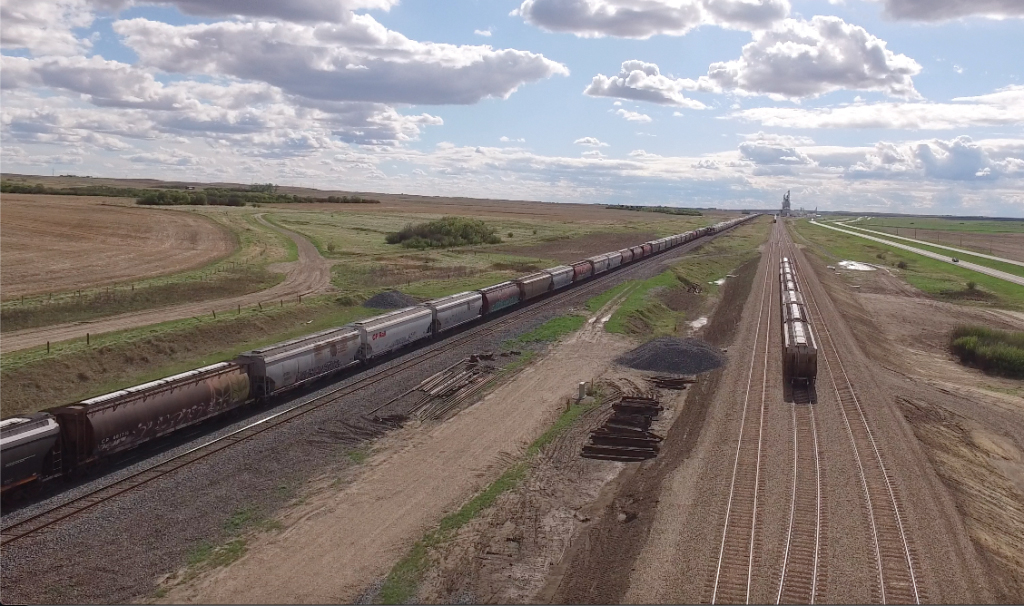THE PROOF IS IN THE POOP
USING NIRS TO MAXIMIZE FEED GRAINS’ POTENTIAL
BY TYLER DIFLEY AND SYDNEY DUHAIME
Near infrared spectroscopy (NIRS) continues to be investigated for its potential to improve feed efficiency in livestock, saving feedlots money and making the livestock industry more profitable.
University of Saskatchewan PhD student Larisa Jancewicz has been working with Agriculture and Agri-Food Canada (AAFC) in Lethbridge to determine how effectively livestock are utilizing their feed. She does so by using NIRS to analyze the chemical composition of their feces.
“In cattle diets, 50 per cent is starch, so starch is a good indicator of how they are using their feed,” Jancewicz said. “The less starch in the manure, the more efficiently they are using starch.”
These humble animal droppings tell an important story. When nutrients, such as starch, are found in high concentrations in the manure, it means the animal is not utilizing them, Jancewicz said, and this waste lowers the feed efficiency. If the grain is processed differently so that fewer nutrients are wasted, feedlots can improve feed efficiency and save money.
“They can get more gain for the same amount of barley,” she said.
NIRS uses the refractory wavelengths of light to estimate the composition of a material, bouncing infrared light off of the material and recording the wavelengths of the light that rebounds. When used on feed, NIRS can reveal the concentrations of various key nutrients.
“We can measure the fibre content, starch content, pectin content,” said Tim McAllister, a research scientist specializing in ruminant nutrition at AAFC’s Lethbridge Research Centre. “Anything you can develop a calibration curve for, you can measure.”
In order to use NIRS to determine nutrient content, a calibration curve is established by comparing NIRS results with the results of traditional wet chemistry tests conducted on the feed, McAllister said. Wet chemistry can provide reliable values for nutrient content, but it is an expensive and time-intensive method of analysis.
“We would collect samples from the industry, run them through NIRS to predict the nutrient content and then send them again for wet chemistry analysis to compare the prediction to what was collected through wet chemistry,” McAllister explained. “Then that would represent the final validation.”
Although creating a calibration curve can be costly, as it requires the testing of countless feed samples before it can be considered accurate, McAllister said the work has value.
“It takes some initial investment to set up a calibration curve, but once you have them and they are validated, then you can save an awful lot of money in the long run,” he said. “If we can develop a calibration curve that anyone can use, we can easily assess the value of the feed and how it is utilized. It represents a major step forward.”
According to Karin Schmid, beef production specialist with the Alberta Beef Producers, Jancewicz’s research presents some intriguing possibilities for the cattle industry.
“Larisa’s work is interesting because it shows that there are areas of improve- ment for barley production for silage,” she said. “If we can improve feed utilization through feed processing, it will improve feed efficiency.
“Anything that improves the bottom line on the feedlot side is very important.” KCL Feeders has used NIRS for roughly three years, according to feedlot manager Riaz Mohammed. He explained that they are extremely supportive of Jancewicz’s research, for which they provide fecal samples from their feedlot.
“We are paying money for the grain we buy and we do not want to lose the grain in the manure,” he said. “So if there is a lot of grain in the manure, we are not utilizing the grain to its full potential.”
Riaz added that many feedlots are not tak- ing advantage of NIRS, either because they are not aware of its value or because they do not have the time, labour and financial resources to conduct proper data analysis.
According to McAllister, outsourcing NIRS analysis could provide a practical solution for feedlots that want to reap the benefits of the technology without the hassles.
“I believe there is an opportunity for a third party to perform the testing,” he said. “I think the feedlots would like a situation where they hand this over. Where someone can look at the findings and the implications in relation to their bottom line.”






Comments